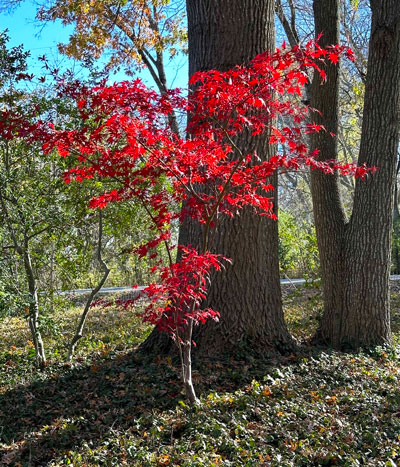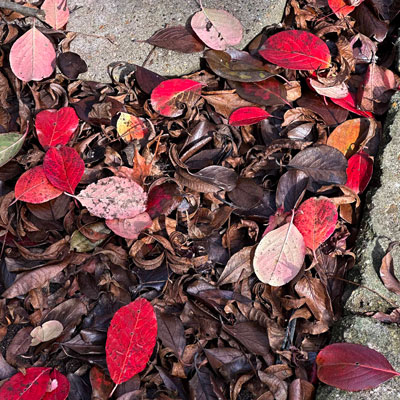A Quick Word About Fall Color

I’ve done other much longer stories about “The Best Plants for Fall Color” in my newspaper columns, here in e-gardens, in the FAQ pages of my website, and in my book Lone Star Gardening. I’ve made long lists of the plants that are most reliably colorful and where they’re best suited.

The short form of it all is that your best choices include Chinese pistachios, red oaks, ginkgoes, crape myrtles, and, where they’re adapted (acidic soils), sweet gums, maples, and dogwoods. Ornamental pears and Chinese tallows are stunning and reliable for fall color, but they are invasive and troublesome – they should not be planted.
My real point in addressing this topic today is to help you fine tune in on fall color. It’s a nice feature, but it shouldn’t be the main reason why you choose any new tree for your landscape. Fall color is only going to hang on the trees for 5 to 10 days. The rest of the year you’re going to be looking at the tree with or without leaves. It’s far better to buy a tree that looks great 50 weeks out of the year. Then, if it has outstanding fall color, so much the better.

In answer to the gentleman who called my radio program from Denton this past Sunday morning… He said he’d moved down from the bank of the Ohio River where red maples were glorious each fall and where they held their color for 10 or 15 days. In Texas, he lamented, they only hold for a few days.
I told him that’s what happens with trees here in Texas. After they have survived the tough times of hot summers, they’ve used up a lot of their energy. We’ve had three straight years with hot, dry Septembers, and those have taken tolls on the fall colors of October, November, and December.

Best chances for fall color…
• Start with a species that at least has that potential.
• Avoid high-nitrogen fertilizer after mid-September so that you won’t be seeing flushes of new growth.
• Hope for early fall rains or keep the trees watered deeply and regularly.
• Then hope for cool weather that takes them down near freezing before it warms up again. That will cause the pigments to start changing from greens to reds, oranges, burgundy, and yellow.
